Delhi/Mumbai: Consultant chef Suvir Saran walked away when the owners of a new restaurant in Mumbai asked him to replicate the menu of another trending hotspot. Same vibe, same burrata, but in turquoise instead of terracotta. “So you want me to sell you a counterfeit handbag but charge for couture?” he asked the proprietors. The meeting ended early. But Saran never regretted choosing creativity over conformity.
The monopoly of a clutch of restaurant consultants, ‘foodstagram’ on social media, and owners chasing tried-and-tested trends has resulted in a sameness malaise of staid menus and cookie-cutter colour palettes. And cities like Delhi-NCR have fallen prey to the ‘Ctrl+C, Ctrl+V’ disease. It’s the cut-copy-paste culture, say consultants like Saran. New restaurants are to food what fast fashion is to couture.
Concepts are recycled and replated with microgreens and a dollop of nitrogen ice for drama. This aesthetic mimicry and repetitive menus are fuelled by the fear of missing out. Today, almost every new restaurant has the same Aglio e Olio, Korean fried chicken, avocado toasties, and truffle fries with the familiar Cosmopolitan and Old Fashioned.
“There’s a tendency to chase trends—often at the cost of intention and authenticity. I’ve had clients who were more concerned with their Instagram grid than with flavour, technique, or guest experience,” said Saran.
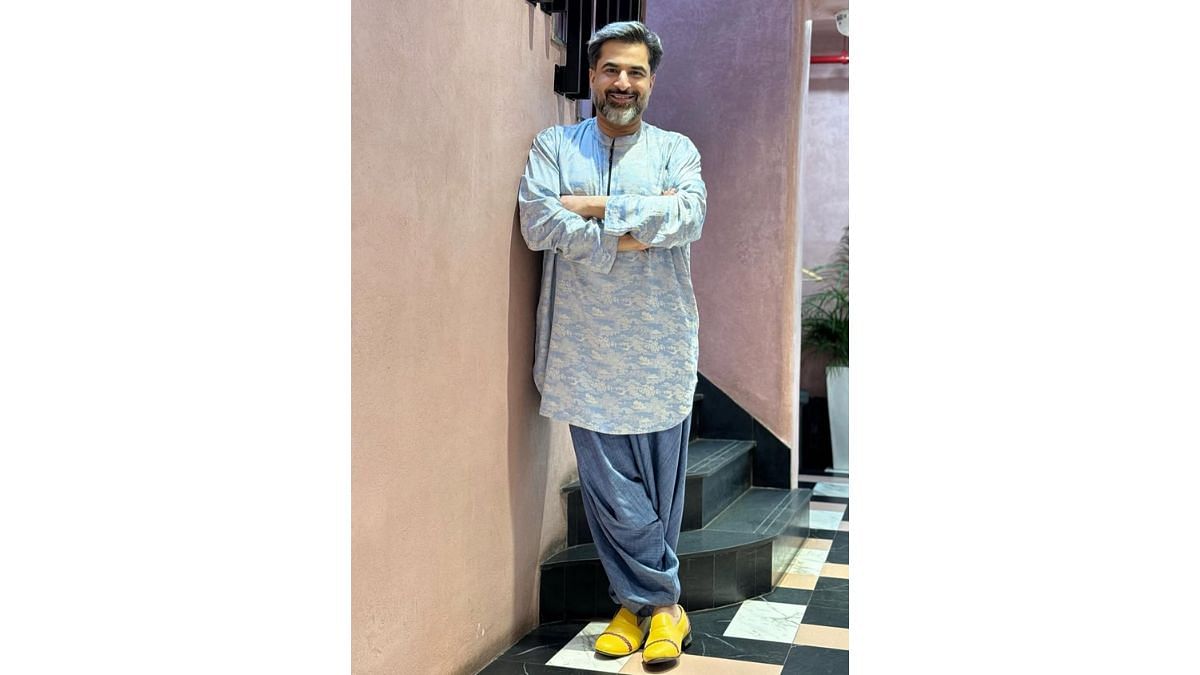
For those willing to innovate, the biggest challenge is to constantly find ‘something new’ and stay ahead of the curve. For the most part, consultants blame proprietors for chasing quick profits and return on investment. But a few admitted that the cut-copy-paste culture is the result of too many consultants spoiling the broth.
“Much of this homogenisation comes from consultants prioritising market-safe templates over original ideas,” said consultant chef Sabyasachi Gorai, whose list of ventures includes SodaBottleOpenerWala, Olive Bistro, The Wine Company, Beer Cafe, Lavaash by Saby, and Khubani.
“They are playing it safe with what’s trending rather than what is actually good food. And people want to put their money in a project that can give guaranteed success.”
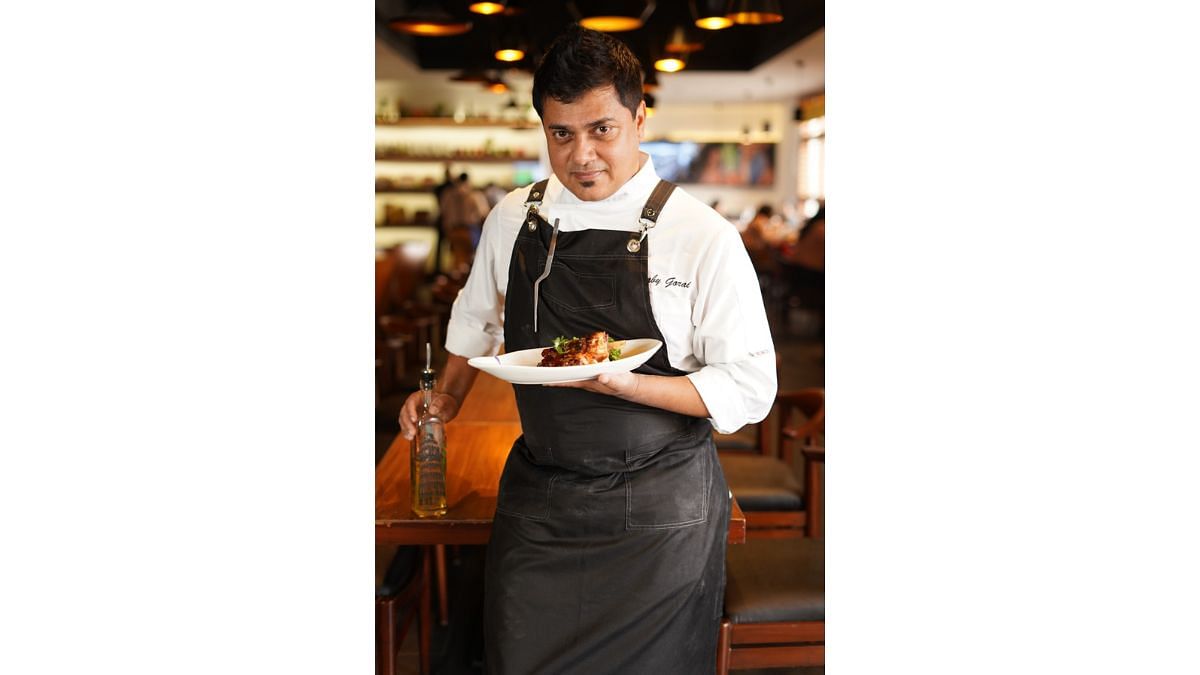
The trade-off
When former cricketer Yuvraj Singh decided to launch his upscale restaurant Koca at Gurugram’s Golf Avenue 42 in April this year, his team brought in chefs Megha Kohli and Noah Louis to curate the menu. Discussions started two years ago, before Koca opened its doors to patrons. The brief was simple: Pan-Asian menu with touches of global cuisine, and a club-style setting on the terrace.
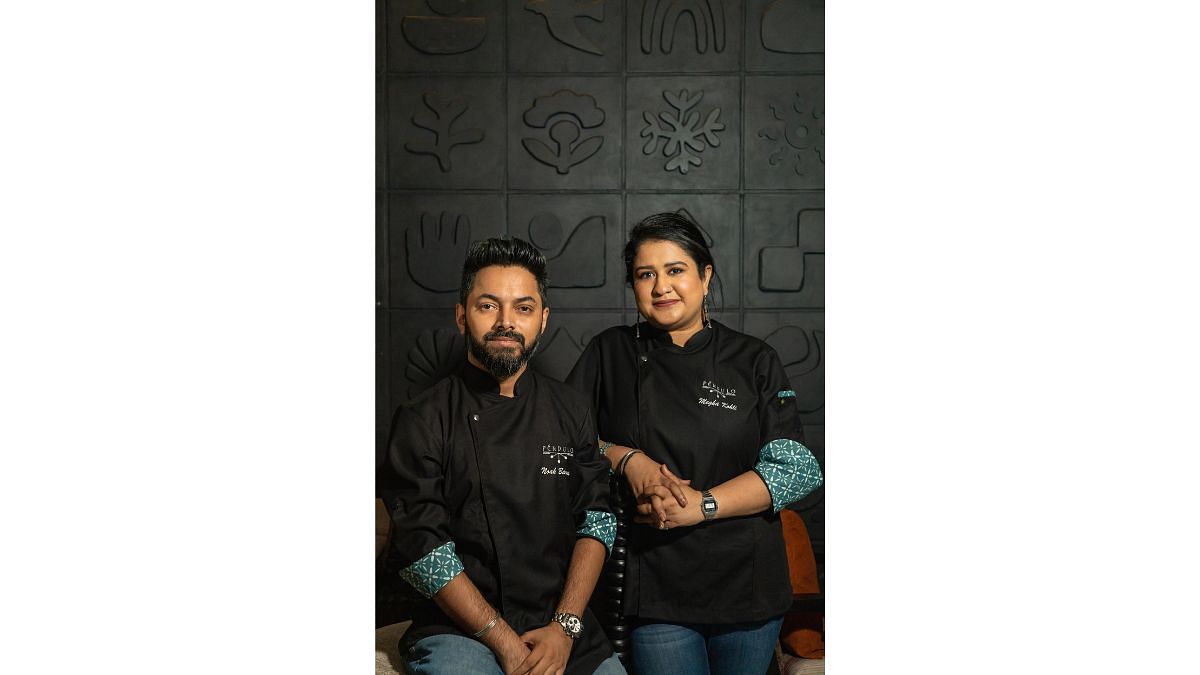
The chef consultants wanted to create a restaurant that was a reflection of the cricketer. They began with a moodboard— with a concept note, visual references for interiors and plating, crockery, portion size, and a style guide that set the tone for the space.
Kohli and Louis then designed a preliminary menu structure, or menu stencil, outlining the key sections.
Apart from the menu, consultants also draw up detailed business plans for clients, covering revenue strategies, pricing models, and clearly defined target audiences.
“The moodboard also informs the layout of the kitchen, equipment, and the operational flow,” said Kohli, explaining how they crafted dedicated sections like ‘Yuvi’s Favourites’ over iced tea and thecha dumplings at Addoni’s, a hundred-seater restaurant at Green Park, where nothing costs less than Rs 500.
“Try the duck dumplings as well,” said Kohli. She would know. She consulted with Addoni’s too and insisted that duck be used as a filling for dumplings.
For ‘Yuvi’s Favourites’, traditional crowd pleasers were given an eclectic twist. Tempura fries with zucchini, sweet potato, Japanese seasoning mix, and black garlic aioli, chilli garlic edamame, Vietnamese somtam (a mix of lemongrass, yuzu, peanuts), and Thai mango salad all made it to the list.
“This brought a personal touch of the cricketer to the restaurant; it became the connecting point of the identity of the space as well as Singh,” Louis added.
But this is more the exception than the norm. Most consultants are not given the luxury of time or the freedom to experiment. And in this competitive space, lesser-known chef consultants trying to get a firm hold in the industry simply provide instructions, find the middle ground, and collect their fee. Many choose not to have their names attached to the final product.
Kohli and Louis, who also run their own establishments — a Middle Eastern cuisine restaurant, Mezze Mambo, and a Mexican-cuisine restaurant, Miss Margarita, respectively — both in Greater Kailash II, take a more hands-on approach.
If something doesn’t sit right with us, we can’t ignore it,” Louis said. “At Addoni’s in Delhi’s Green Park, for example, I also contributed to the beverage programme, advising on flavours, food pairings, and more.”
Gorai, too, backs entity-driven consultancy as a solution to imitation.
“Let go and speak your mind out, or else you will lose your identity. You may not get projects initially, but then you will be able to establish your brand in the space,” he said.
Cut, copy, paste menus
Burrata was a revelation on pizza a few years ago. The trend quickly moved to avocado—the darling of gourmands and dieticians. And now, matcha, truffle, and edamame are having their moment in the spotlight.
“Not just dishes, entire sections are copied,” said Saran. “I’ve seen verbatim copies of menus, down to the font and phrasing.” The deconstructed gajjar ka halwa—once a novelty—has now become a standard menu item.
“And the now ubiquitous ‘edamame truffle dim sum’, often with no one in the kitchen who knows what makes a dim sum wrapper silky or how to balance umami.” Tweaks like a drizzle of chili oil and a flash of microgreens are treated like star highlights.
“It’s cosmetic, not conceptual,” he declared.
It’s little wonder, then, that consultants often find it difficult to avoid being influenced by what their competitors are doing.
“I don’t visit other restaurants that frequently, not even for inspiration,” said Gorai.
Kitchen spaces, good staff
Kohli recalled a restaurant project in Delhi where the kitchen layout was nearly finalised by the time she and Louis were brought on board. It looked like a dream with its sleek counters, but the pass window aligned with the service area was “a nightmare waiting to happen.”
“The dessert section was too close to the grill section, with no designated fresh air flow system. The fire exit corridors were jammed, and the prep kitchen was on a different floor,” she said.
The duo told the architect as well as the owner that the existing kitchen layout would not support clean or consistent service. “We redrew the flow. Moved sections, aligned setups,” said Kohli. “There was pushback, especially from the design team.”
Restaurateurs tend to prioritise adding more seats over creating a functional, spacious kitchen. But this mindset has to shift, said Gorai.
Cramped kitchens handling multiple cuisines often result in chaos that carries through on the plate.
Unlike many consultants who accommodate requests to hold food trials at homes or farmhouses, Louis and Kohli insist on conducting trials only once the actual restaurant kitchen is ready.
“Dishes prepared in a farmhouse can’t adjust to the workflow of a commercial kitchen,” said Louis. “The burner’s heat output, for instance, differs drastically, which throws off temperature control and ingredient ratios. It’s never a true reflection of how the dish will perform in the restaurant.”
Mumbai vs Delhi
Once the kitchen layout is final, the real task begins — finding skilled chefs. In Japan, it takes up to seven years to earn a sushi-making licence. Mastering sashimi with fugu, the poisonous pufferfish, adds another four to five years of training.
“Meanwhile, in India,” said chef Gorai with a laugh, “The same cook is expected to make sushi, risotto, pizza, and noodles. It makes no sense.”
While global cuisines demand years of discipline abroad, here they’re often rushed onto menus without the same level of expertise.
The consensus, though, is that Mumbai is more open to experimentation than Delhi. Having consulted in both cities, chef Viraf Patel finds Mumbai more open to creative inputs. Delhi has excellent food and strong hospitality, but has a tendency to “over-patronise” cuisine—overthinking or overcomplicating it rather than letting it speak for itself, he said.
Restaurateurs like Aditia Dugar, the driving force behind Masque, Table co-founder Gauri Devidayal, and AD Singh, who opened the first Olive in Mumbai, have shaped the city’s dining culture. Sameer Seth and Yash Bhanage opened Bombay Canteen, which isn’t afraid to interrogate the food it serves— be it squid kheema pao or ghee roast chicken squid.
Delhi, Saran argued, is still waiting for that kind of leadership.
But the audience is ready. Diners are curious, hungry for experiences that go beyond fancy decor and viral dishes. What’s missing is a willingness to stop chasing short-term returns.
“Are they willing to momentarily disrupt their bottom line to invest in long-term, sustainable, truly thrilling growth?” Saran asked.
Also read: A Trumpeter, an insurrectionist & a Martian walk into a bar
Bar consultancy
Last year in June, customers would wait 20-25 minutes outside Lair, a Delhi bar ranked number 8 in Asia, just to get their hands on the bar’s special, Picante — a bold, tequila-based savoury cocktail. Word spread fast.
By autumn, every bar across Delhi NCR had a Picante on the menu, some did it with raw mango, others replaced the base liquor from tequila to vodka.
As he sipped a cold latte at a cafe in Safdarjung, Angad Singh Gandhi, a former Glenfiddich brand ambassador, reflected on the bar scene. It’s fallen prey to templates, he said.
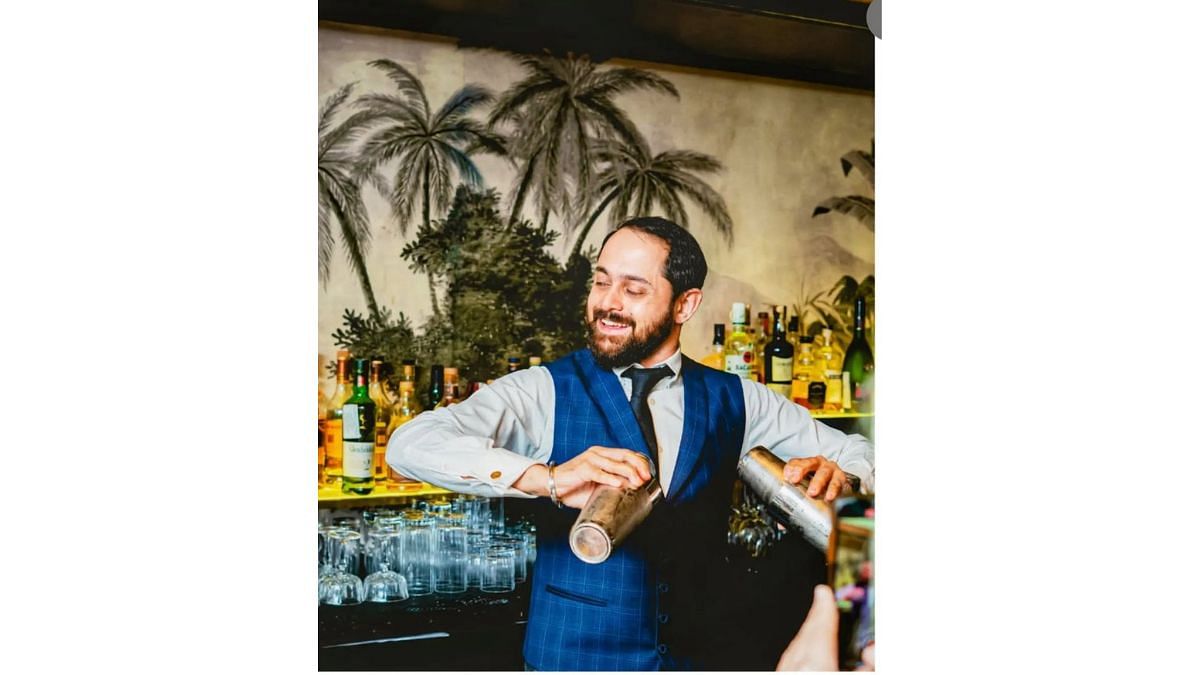
Now running a consultancy, Drams with Drama, he works with bars like Dharaz, Colaba Canteen (in Chandigarh), and The Dressing Room (in Delhi). At Dharaz in Sector 17 in Chandigarh, a neighborhood full of legal offices, he built the beverage programme around courtroom dramas. The menu features drinks like Objection Overruled and Prosecution Parrot, designed to strike a chord with its core clientele—lawyers unwinding after work.
But convincing most bar owners to think beyond what is common is a challenge, he said.
“They show reference photos from Pinterest and say, ‘Do this.’ That’s not how this business works. And, months later, they will be cribbing about not having enough ROI,” Gandhi said.
Bar owners often cut corners—and it shows. From serving Manhattans in whiskey glassware instead of martini or coup glasses to unwanted garnishes like elderflower and thyme, and even compromising on liquor quality, the attention to detail is missing.
A consultant, who requested to stay anonymous, revealed a common trick of bar owners.
“They claim to use Absolut Vodka in a Cosmopolitan but refill the bottle with Smirnoff.”
When she objected, she was told, “Women anyway don’t know what they are drinking. The sweetness of a cosmo will overshadow the liquor.”
A few smarter and passionate bar owners now bring in consultants from day one, focusing on experience, not just aesthetics.
“A good cocktail programme starts with people who know what they’re tasting,” said Vikram Achanta, founder of Tulleeho, who has worked with bars like LouLou and Sarava in Goa and Toit in Bengaluru. For him, education is key.
Without that, bartenders churn out bland drinks, leading to a familiar scene: a guest sending back a cocktail—“too sweet,” “too sour”—as the bartender scrambles to fix it, again.
“In a city overflowing with sameness, the only bars that stand out are the ones that dare to taste different and challenge the taste buds like a scotch-based cocktail or a fat-washed or a milk-washed drink,” Gandhi said.
Key mistakes
While it’s easy to point fingers at funders obsessed with “what’s hot and now”, the rot runs deeper. Designers, chefs, PR firms, and yes, consultants—everyone shares the blame when imitation is prioritised over originality, according to Saran.
He outlines key mistakes that consultants often make, leading restaurants straight into the copy-paste trap. Among them: designing with aesthetics, not intention; assuming “modern” must mean “global” and “global” means “Western”; and failing to connect the food to the founder’s story.
“Ignoring regionality, seasonality, or sustainability and overpromising ‘viral moments’ instead of building enduring value are two more things where consultants falter,” he added.
These shortcuts are why so many new restaurants feel like copies of each other—flashy on launch day, forgotten by month six.
A few consultants are pushing back.
Last year, at a multi-cuisine restaurant in Gurugram’s Two Horizon Centre, chefs Kohli and Louis were asked to retain a sprawling 80-item menu packed with heavy gravies and predictable Indian fare. They resisted.
Tensions rose, debates dragged on—but they didn’t budge. They trimmed the menu to 60 dishes, refined the offering by converting a naan and chicken curry into a chicken taco, and reimagined the concept from a multi-cuisine restaurant to a pub food spot.
The owners didn’t agree with them. But Kohli and Louis stuck to their guns. Within a month, the restaurant went from a Rs 5 lakh monthly loss to breaking even and was finally in the black.
Trust the diners, said Louis. “They are far more open-minded than they are given credit for.”
(Edited by Ratan Priya)



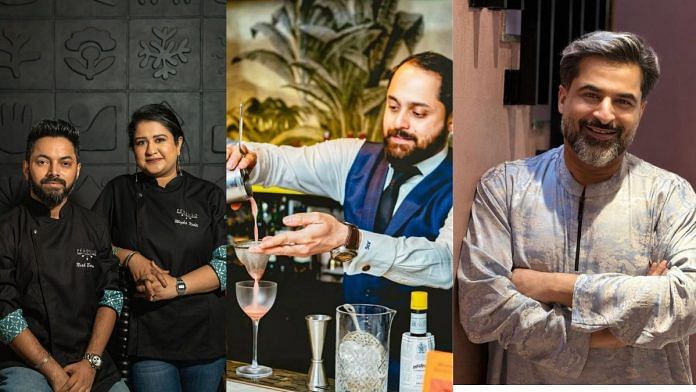



This looks like a sponsored article. Is it ?